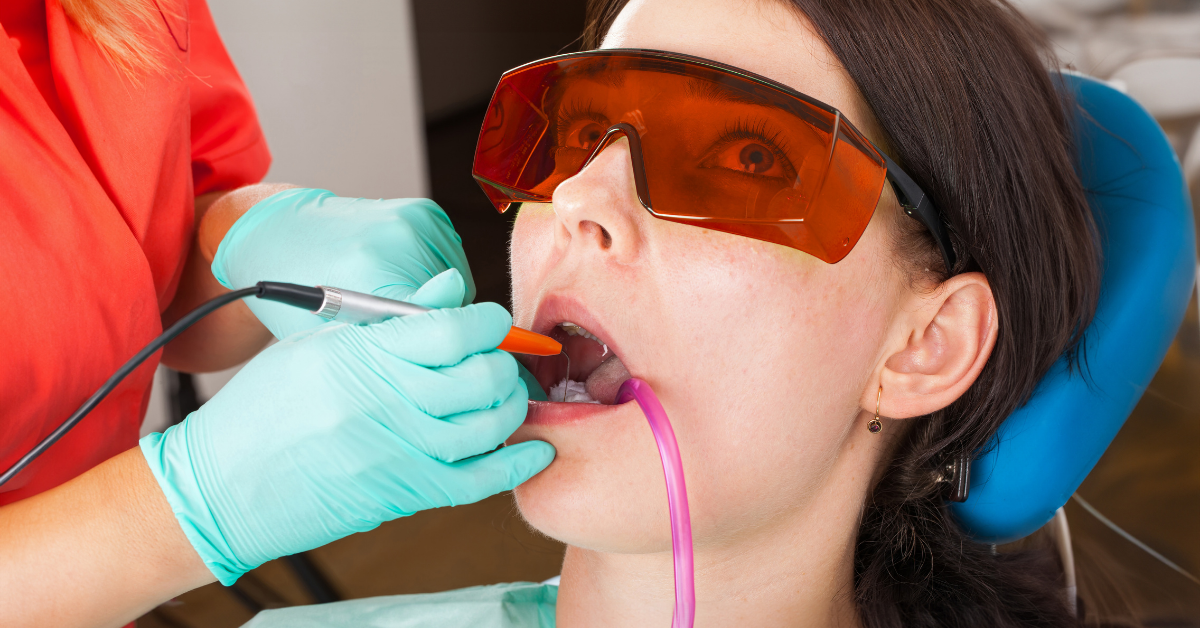No products in the cart.

The CAO Group provides 4 different 810 nm soft-tissue lasers options that offer numerous benefits that significantly enhance the patient experience and, in doing so, improve patient outcomes. Here are some examples of how patients benefit from these lasers:
Reduced Pain and Discomfort: Soft-tissue lasers, operating at an 810 nm wavelength, are minimally invasive and provide precise tissue interactions. This results in less pain and discomfort during and after procedures. For instance, when treating gum disease or performing oral surgeries, patients often report minimal discomfort and a quicker recovery compared to traditional methods involving scalpels and sutures.
Less Need for Anesthesia: The precision of 810 nm lasers allows dentists to perform many procedures with minimal or no anesthesia. This is especially appreciated by patients who may have a fear of needles or the lingering numbness associated with anesthesia.
Faster Healing: Soft-tissue lasers at 810 nm wavelengths promote accelerated tissue healing and reduced inflammation. Patients experience shorter recovery times, allowing them to return to their regular activities sooner.
Improved Aesthetics: These lasers are valuable tools for cosmetic procedures, such as gum contouring or depigmentation. Patients benefit from enhanced smile aesthetics, leading to increased confidence and overall satisfaction with their appearance.
Enhanced Gum Health: Laser-assisted periodontal treatments using 810 nm lasers result in improved gum health, reduced bleeding, and less post-operative discomfort for patients with gum disease.
Now, it's essential to discuss why not using these lasers could be a detriment to patients. Dentists who choose not to embrace modern technology like lasers may inadvertently put their patients at a disadvantage. Such a choice can:
Prolong Patient Discomfort: Outdated techniques and tools may lead to prolonged discomfort, increased pain, and slower healing times for patients, which is not aligned with the current standard of minimally invasive and patient-centered care.
Higher Risk of Complications: Older methods can carry a higher risk of complications, such as infection or excessive bleeding, which can negatively impact patient outcomes and satisfaction.
Missed Opportunities for Improved Care: By not utilizing lasers and other modern advancements, dentists may miss opportunities to provide more efficient, precise, and aesthetically pleasing treatments to their patients.
Not using lasers or failing to embrace modern technology in dentistry is a detriment to patients. Dentists who do not prioritize patient care by utilizing the latest tools and techniques may inadvertently subject their patients to unnecessary pain, discomfort, and increased risks.
Patients seeking the best care are cautious when choosing a dentist and often they consider those who prioritize the use of modern technology and techniques that enhance the overall patient experience and lead to better outcomes. It’s time to make sure you are doing all you can for your patients.
Patients seeking the best care are cautious when choosing a dentist and often they consider those who prioritize the use of modern technology and techniques that enhance the overall patient experience and lead to better outcomes. It’s time to make sure you are doing all you can for your patients.
Leave a comment



